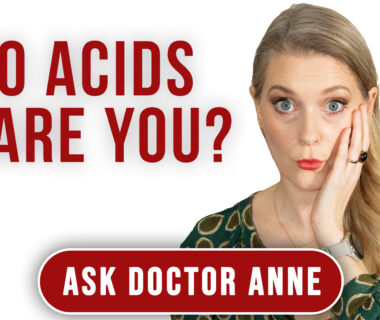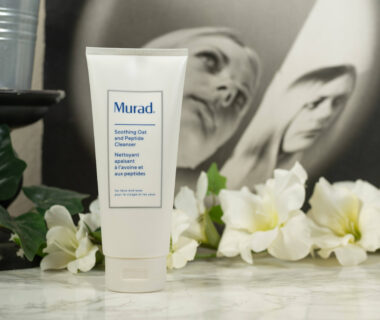Disclaimer: This is not a sponsored blog post.
I recently wrote a blog post about the different causes of hair loss and how that hair loss can appear no matter which age you are (you can find it here). But how about that hair thinning that many of us experience when we pass age 40? Does age play a role in the appearance of our hair, is there a difference in different ethnicities and, most importantly, is there something we can do to prevent hair aging, similar to how taking care of our skin can prevent some of the visible changes there?
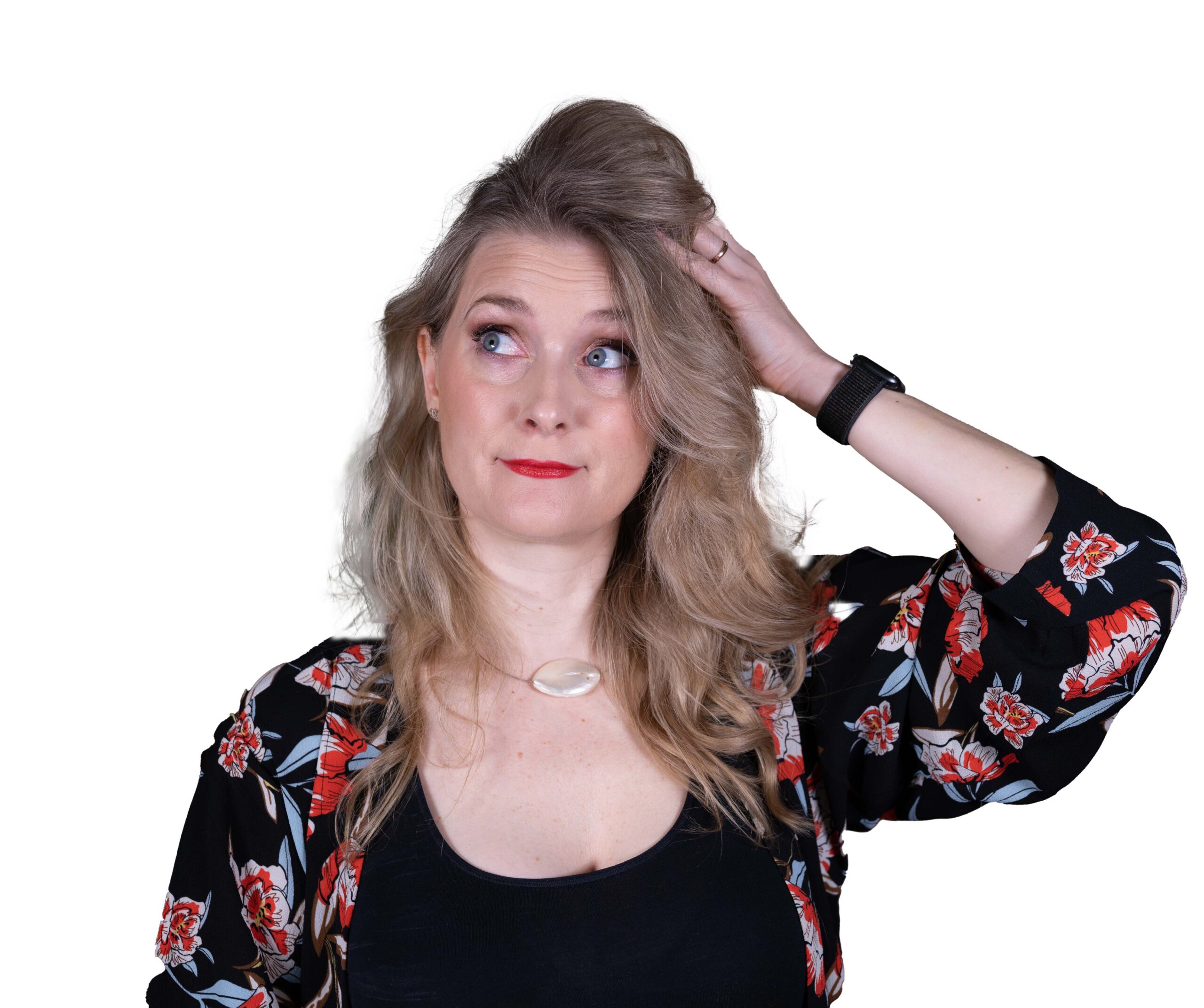
Let’s talk! Oh, and if you are interested in your hair going gray, I have a dedicated blogpost on that topic here. Today we will talk about all the other changes that can happen.
Is age a contributing factor to hair thinning?
If you have ever looked back at old pictures and thought: Wow, my hair looked really amazing back then – why is it so much thinner now, and why am I not able to grow it as long anymore, you are most likely not imagining things.
After a long time where hair loss with age was usually seen as manifestation of male or female pattern hair loss, so androgenetic alopecia, in the mid80s hair aging gained more interest and the term senescent alopecia was used to describe the specific changes happening.
These include actual hair thinning, so a reduction in the diameter of the individual hair, a shortening of the anagen or growth phase, the permanent loss of hair follicles and an increased vulnerability to hair breakage.
The contributing factors are divided into intrinsic and extrinsic factors.
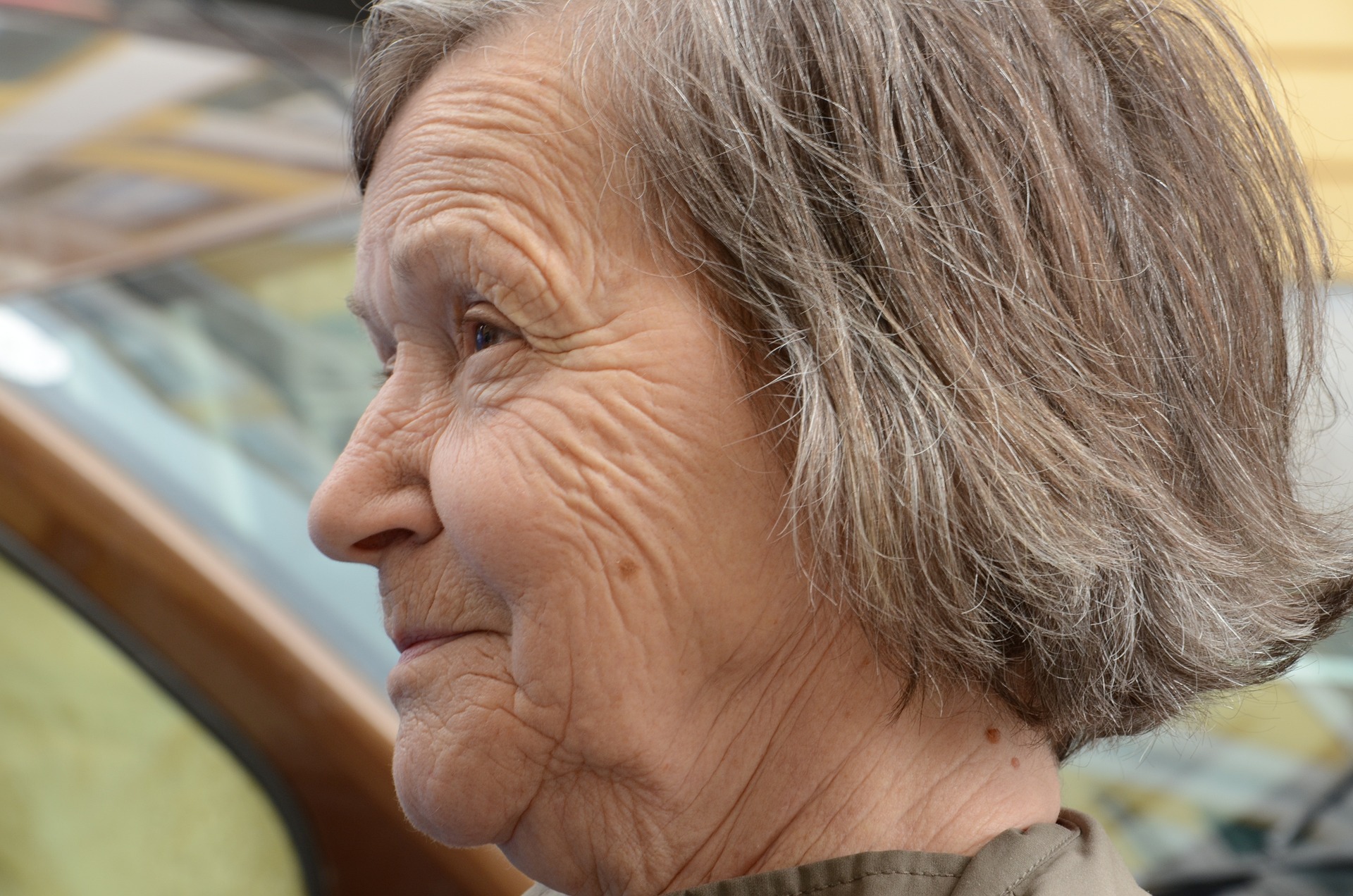
Which intrinsic factors contribute to hair aging?
Intrinsic factors are factors that lie in the body and its changes itself, and a very important one here is hormones – aren’t they always though?
Both hair growth as well as scalp health are influenced by the balance between estrogen, progesterone and testosterone and even slight changes can lead to increased shedding. If you have borne a child, you know how crazy your hair changes through pregnancy and postpartum and as we enter perimenopause and reach menopause, our hormones are everything but in balance.
This shift in hormones not only affects the length of the hair growth cycle, meaning hair will stop growing earlier and fall out quicker, but also the structure of the hair that grows out of the follicle. Aging hair is thinner in diameter, with the decline starting in your late 40s, which not only makes your overall hair appear thinner, but also makes the hair more prone to breakage, something we will discuss later.
Sebum production also declines as we age, meaning that our scalps get less oily, but also our hair isn’t as coated in sebum, making it drier and less shiny.
Other contributing factors for increased hair loss with age are nutrient deficiencies, whether because of a poor diet or because with age the body isn’t able to absorb nutrients from your foods as well anymore, then the increase of systemic diseases that might affect scalp and hair health and lastly the death of some of your hair follicles due to either damage done to them or simply due to, well, aging.
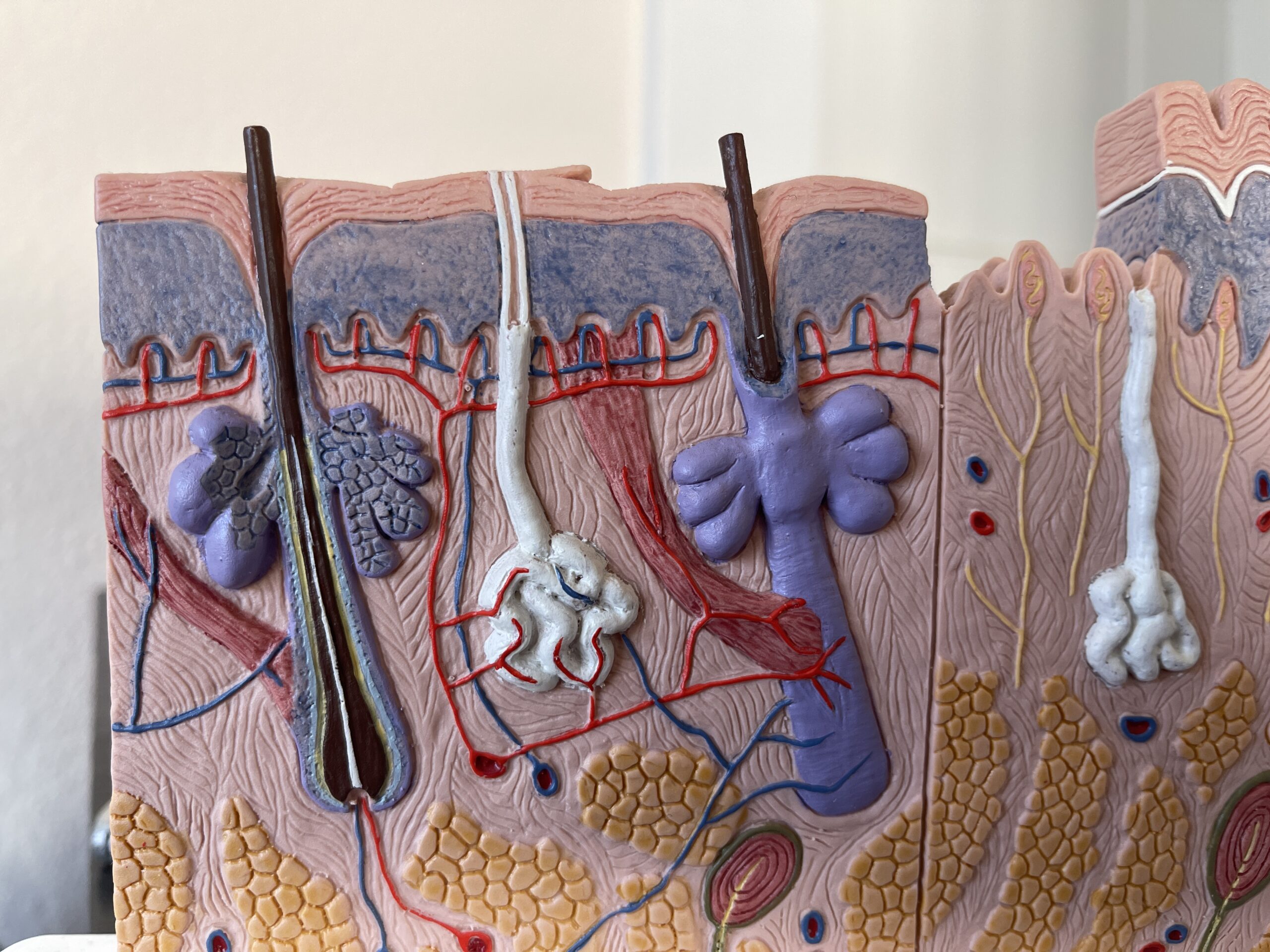
Which extrinsic factors contribute to hair aging?
Extrinsic factors are the ones that influence your hair from, well, external. Going hand in hand with the increase in systemic diseases goes the increase in medication you might need to take for different reasons, some of which might contribute to hair loss.
The most important external factor though is the cumulative damage done to the hair and scalp over the years, combined with the structural changes we discussed earlier. Thin hair is more prone to breakage through combing for example, and gray hair is more prone to UV damage than dark one.
Basically everything you have been doing to your hair over the years, the sun, the salt water, the bleach, the perm, the heat, the styles – it all adds up over the years and meets hair that is more fragile, which means chances are higher that your hair will break off before it reaches the end of its growth cycle, meaning an overall shorter and thinner appearance of your hair.
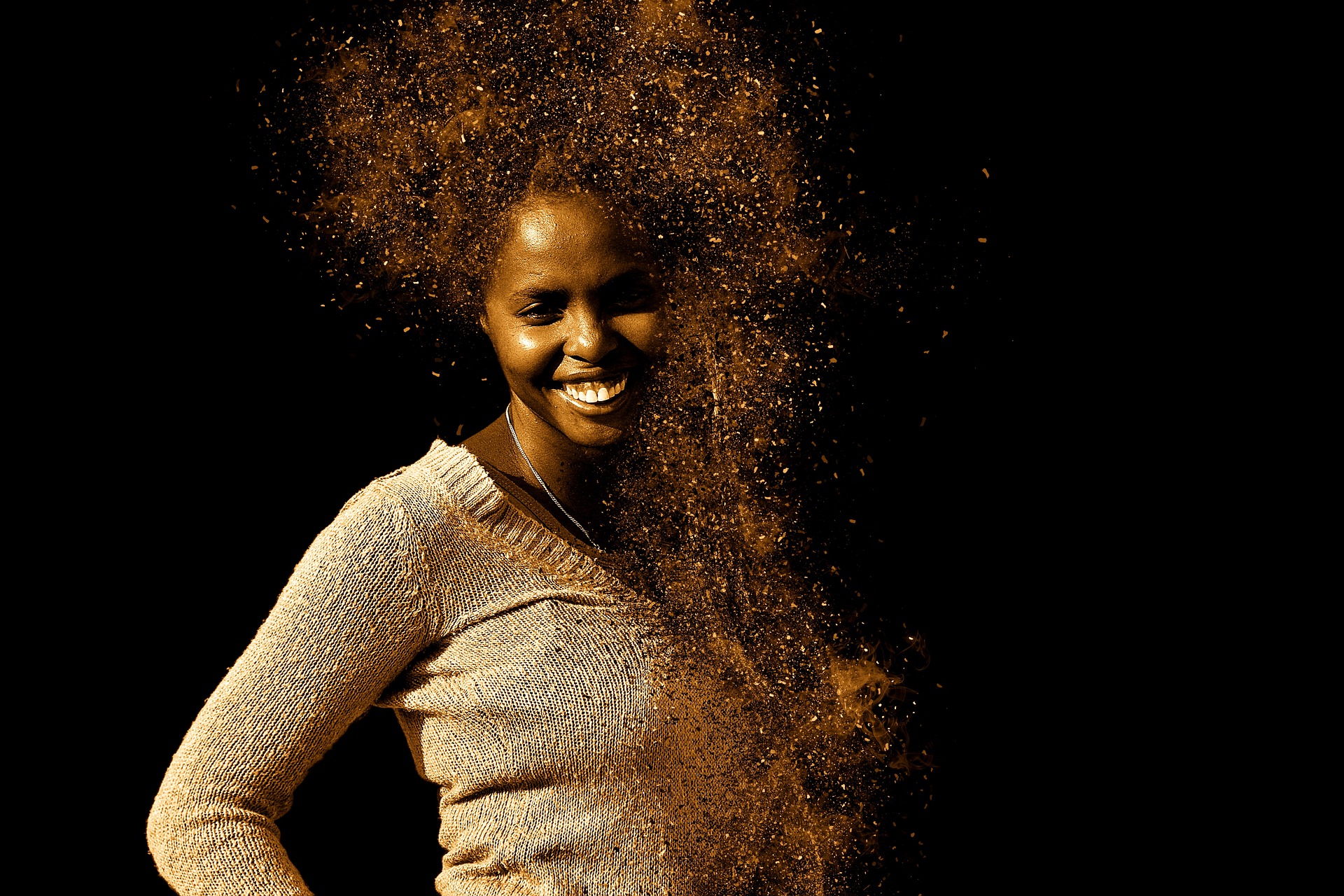
Does hair of different ethnicities age differently?
Now we know that the hair structure is different in different ethnicities, and an overview over the current literature done by Maymone et al in 2021 could demonstrate that it also ages differently. Not only in the age when we are most likely to go gray, but also in where the changes happen.
Caucasian and Asian hair are more likely to experience damage in the distal hair shaft, while the damage in African hair is more likely to show up near the roots, meaning the hair breaks off nearer to the scalp.
The reason is in all the that factors mentioned above, but as the average diameter is different to begin with – biggest in Asian hair and smallest in African hair – and the texture is different, with predominantly straight or wavy in Caucasian and Asian hair and tight coils in African hair, African hair is throughout your whole life more prone to damage, and some of the traditional hair styles, for example tight braids or treating the hair with relaxers, leads to increased cumulative damage near the roots.
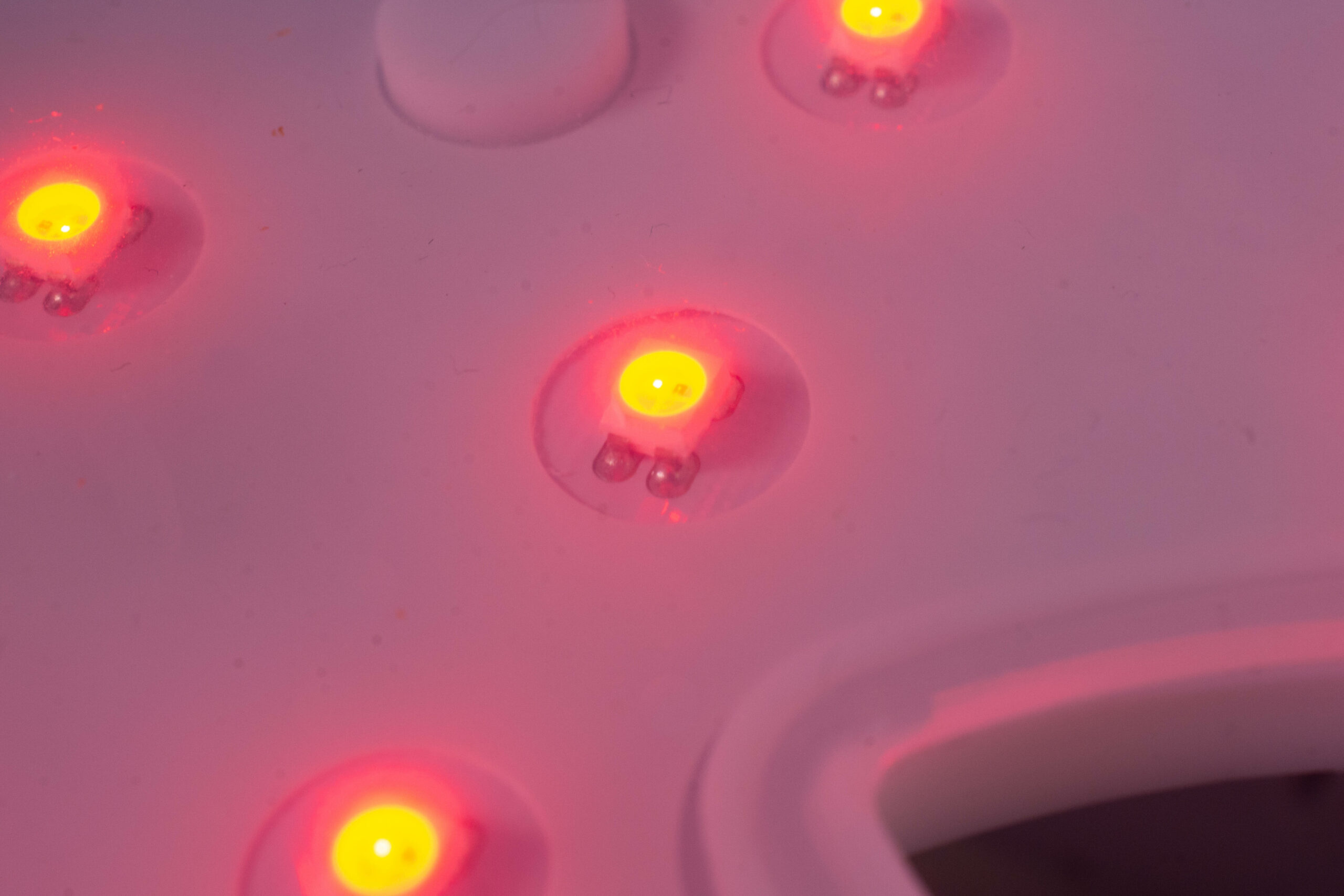
How can I prevent hair thinning with age?
As always when it comes to preventing signs of aging, there is only so much you can do.
Some things are just natural changes happening in the body and can’t be prevented, like the death of some hair follicles and the loss in diameter. Other things though, like nutritional deficits or damage done to the hair, is something you can address even at a younger age. That won’t make your hair thicker, but it will prevent it looking thinner than it actually is because it will be able to go through it’s full growth cycle instead of breaking off mid-way.
If the hair loss you experience is bothering you, your best option is to talk to a dermatologist as they can differentiate between changes due to aging and other causes of hair loss that might appear simultaneously and might be treatable.
Something that is over the counter and approved for treating androgenetic alopecia is topical Minoxidil, so that is an option – it takes 6 months of consistent use to see results though, and then there are other options like LED Light therapy (More info: LED Light Therapy in skincare), hair density peptides (More info: What are peptides?) and different other options that have more or less data on their effectiveness and that can be tried for support.
TL;DR
As we age, structural changes appear in our hair that makes it more prone to damage and breaking off. This increase in hair breakage alongside a reduction in thickness of the individual hair and a shortening of the growth phase of the hair lead to hair feeling thinner as it did before we reached our 40s. The main causes for these changes are hormones and cumulative damage done to hair shaft and hair follicle over the years.
If your hair loss bothers you, see a dermatologist to rule out other contributing factors and to discuss possible treatment. In general though, realizing that your hair is more prone to damage and putting more focus on hair and scalp health is the best supportive thing you can do to reduce the signs of your hair aging.
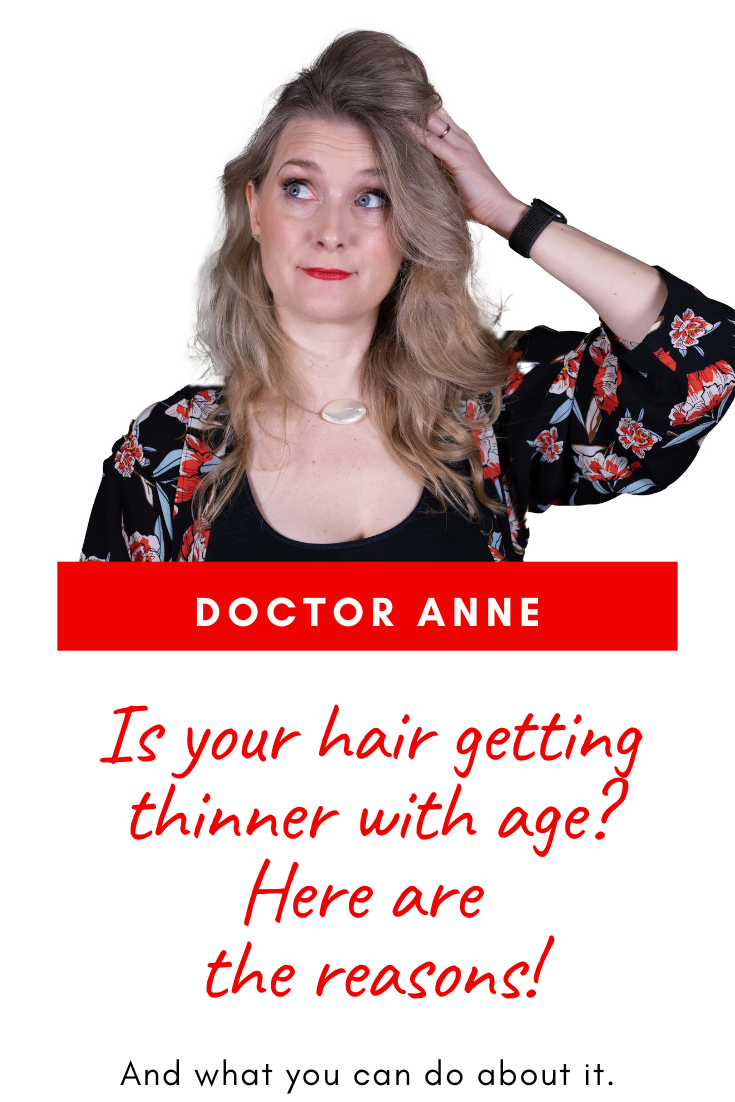
Don’t forget to check out the Discount Code Page on top if you want to save some money on your next skincare purchase.
If you want to get a vote in the next Ask Doctor Anne Topic, Ingredient Spotlight or product I review, don’t forget you can head over to my Patreon account to get more involved!
Sources:
Maymone, M. B. C., Laughter, M., Pollock, S., Khan, I., Marques, T., Abdat, R., Goldberg, L. J., & Vashi, N. A. (2021). Hair Aging in Different Races and Ethnicities. The Journal of Clinical and Aesthetic Dermatology, 14(1), 38. /pmc/articles/PMC7869811/
Monselise, A., Cohen, D. E., Wanser, R., & Shapiro, J. (2017). What Ages Hair? International Journal of Women’s Dermatology, 3(1 Suppl), S52. https://doi.org/10.1016/J.IJWD.2017.02.010
Sadick, N., & Arruda, S. (2021). Understanding Causes of Hair Loss in Women. Dermatologic Clinics, 39(3), 371–374. https://doi.org/10.1016/j.det.2021.03.002
